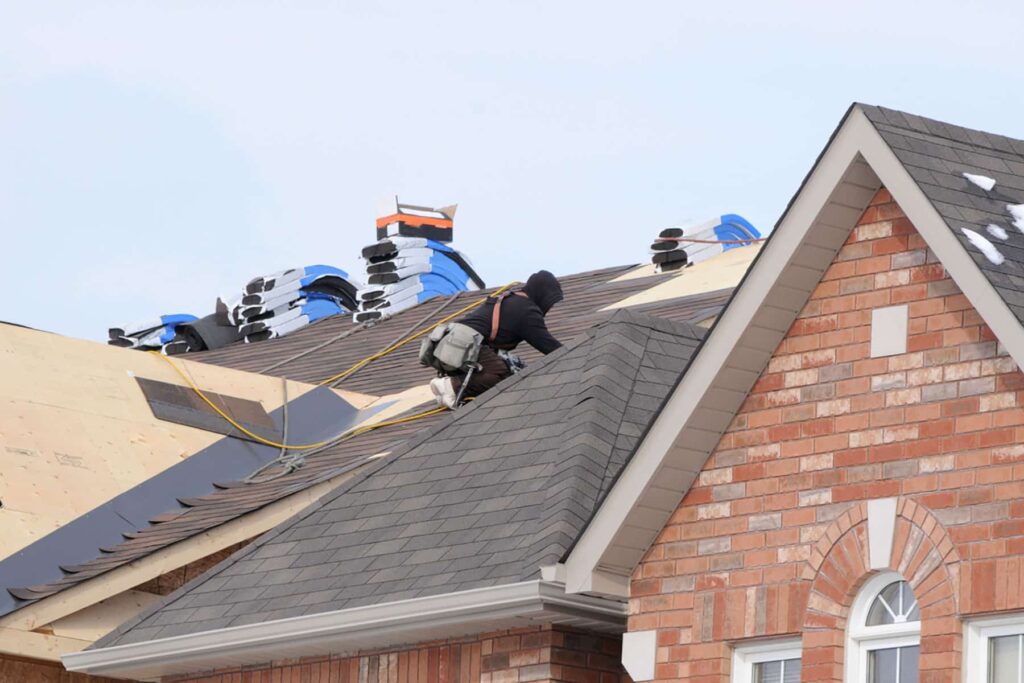Your roof is a critical home component, shielding you from the elements. However, no matter how durable, your roof will show signs of deterioration over time. Reading the signs that tell you to install a new roof can help ensure you stay safe and comfortable in your home. Here are the key indicators to watch for when assessing the condition of your roof.
Checking Your Roof’s Age
The lifespan of a roof depends on the materials used. For example, asphalt shingles can last 20 to 30 years, and metal or tile roofs can last up to 70 or even 100 years. Suppose your roof is nearing or has exceeded its expected lifespan. In that case, it might be time to consider a replacement, even if visible damage seems minimal. Aging roofs are more prone to sudden failures, especially during severe weather, and often require more frequent and costly repairs.
Visible Shingle Damage
Shingles are your roof’s first line of defense; damage to them is a clear sign your roof may need replacement. Curling, buckling, or cracked shingles indicate aging or moisture damage, making your roof more susceptible to leaks.
Missing shingles are another concern, as they leave areas of your roof exposed to the elements. Additionally, when you notice granules collecting in your gutters or downspouts, it suggests the shingles have lost their protective coating and are nearing the end of their usability.
Water Damage and Leaks
One of the most common signs of roof issues is water infiltration. This can manifest as stains on your ceilings or walls, peeling paint near the roofline, or damp and moldy areas in your attic. Leaks often indicate issues with the underlayment or flashing and should not be ignored. While minor leaks can sometimes be repaired, widespread water damage means a new roof is needed to prevent further structural issues.
Sagging or Uneven Rooflines
A sagging roof often indicates that the roof deck or underlying supports are damaged. This issue is typically caused by prolonged water exposure or heavy loads, such as snow or debris. When your roof is uneven or dips in certain areas, it must be inspected immediately to determine whether a total replacement is necessary.
Light Passing Through the Attic
If you see sunlight streaming through your attic, your roof has gaps or holes. These openings compromise your home’s insulation, allowing heat to escape in winter and enter during summer. This impacts energy efficiency and exposes your home to potential water and pest damage. In many cases, visible daylight through the attic signifies that your roof no longer provides adequate protection.
Moss, Mold, and Algae Growth
While moss and algae might seem like minor cosmetic issues, they can signify deeper problems with moisture retention. Moss, in particular, traps water against the roof surface, accelerating wear and weakening the structural integrity of the materials. While cleaning and maintenance can address minor infestations, persistent growth often indicates it is time for a replacement.
Rising Energy Bills
If your energy bills have been climbing despite no significant changes in your usage, your roof might be the culprit. Damaged or poorly insulated roofs allow air to escape, forcing your HVAC system to work harder to maintain a consistent indoor temperature. Installing a new, energy-efficient roof can help reduce these costs while improving your home’s comfort.
Storm Damage
Extreme weather, such as hailstorms, heavy winds, or prolonged rain, can cause significant roof damage. Common signs include dents or cracks in shingles, displaced flashing, and exposed underlayment. After any major storm, it is a good idea to get a roof expert to determine the extent of the damage. If repairs are extensive, replacing the roof may be more cost-effective.
When to Take Action
You now have a list of signs to watch out for, so act promptly if you see any of them. Any delay you make can lead to more extensive damage, increasing repair costs and potentially endangering your home’s structural integrity. If you are still trying to figure out what to do, consult an expert roofing contractor. They can provide an inspection, discuss your options, and guide you through the roof installation process.
Conclusion
Replacing your roof is a considerable investment. However, it ensures your home remains protected in the years to come. By staying vigilant and addressing issues early, you can avoid unexpected costs and maintain the safety and comfort of your living space.

